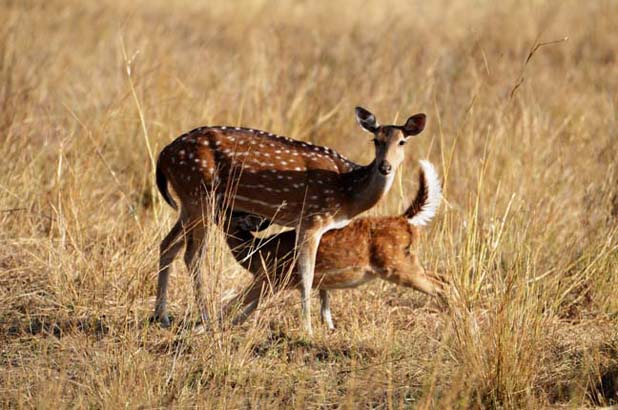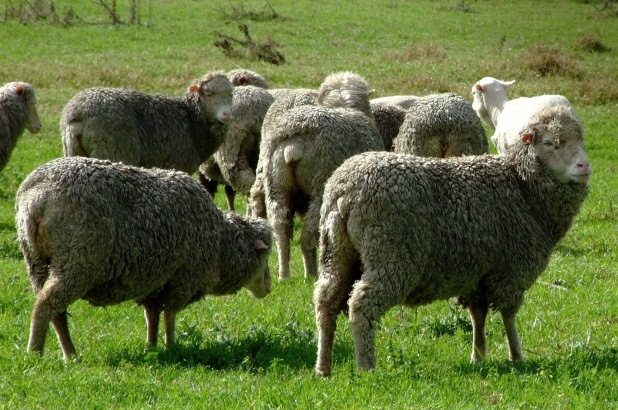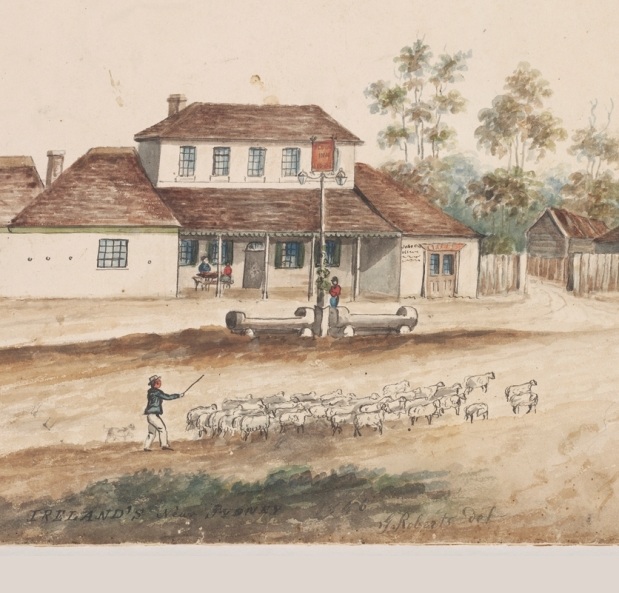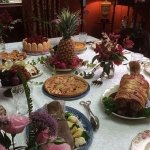If there’s one thing people think of when they hear the name ‘Macarthur’, it’s sheep! Eight years after they had arrived in the colony, Elizabeth Macarthur wrote of the success her husband was making at farming:
Our stock of cattle is large, we now have fifty head, a dozen horses and about a thousand sheep. You may conclude from this that we kill mutton, but hitherto we have not been so extravagant. Next year, Mr Macarthur tells me, we may begin. I now have a very good dairy , & in general make a sufficiency of butter to supply the family, but it is at present so great an object to rear the calves, that we are careful nor to rob them of too much milk…
EM to Bridget Kingdon, 1st September 1798. (ML: A2908)
Building up the livestock was her husband’s concern – and it must have been working if they had managed a flock of a ‘thousand’ sheep in only a few years! Later in the letter she talks of the inflated prices fetched for animals – and that “those who took early precautions to raise live stock have at present singular advantages” (Ker-ching!). It was not long however before mutton was to appear as a staple on the colonial table, which had so far been dominated by pork.
But what exactly is ‘mutton’? Today in Australia we define a ‘lamb’ as a very young sheep having no permanent teeth – up to the age of 1 year. ‘Hogget’ is meat from a sheep with one or two permanent teeth, so from 12 to around 20 months, while ‘mutton’ is anything older. To the British settlers however, ‘mutton’ was really just shorthand for ‘meat from a sheep’, though they did distinguish younger lamb in their recipes. Johnson’s Dictionary (1828 edition) simply defines mutton as ‘the flesh of [a] sheep’. Eliza Acton wrote ‘Mutton is not considered by experienced judges to be in perfection until it is nearly or quite five years old; but to avoid the additional expense of feeding the animal so long, it is commonly brought into the market at three years old.’ (Modern Cookery, 1861 edn., ch.12).
The first sheep arrived in Australia in 1788: 29 animals acquired by Governor Philip at the Cape of Good Hope where the fleet put in for supplies. Like many of his contemporaries, including Reverend Samuel Marsden, John Macarthur’s interest in the improvement of his flock began early. The first ‘merinos’, which many think he introduced, actually appeared quite early – 26 sheep secured from a sale at the Cape in 1797 by ships sent to secure provisions. Macarthur, already farming at Parramatta and whose influence was growing, secured six of the animals: two rams and four ewes. In 1803 – two years after he traveled to London to face charges of dueling and injuring his commanding Officer, Colonel Paterson – he published his aggrandizing pamphlet ‘Statement of the Importance and Progress of the Breed of Fine Woolled Sheep in New South Wales’. It was a document full of the self-assured confidence that was characteristic of all his endeavours.
The following year he gave evidence to an official inquiry into the progress of sheep breeding in the colony, and the future potential for wool production:
The Sheep I first began to Breed from were of the Bengal race, weighing about 6lbs. per quarter. I improved these by rams, obtained from a cross between the Cape ewe and some rams of the Spanish Breed. I cannot ascertain the particular breed of the Rams, I afterwards obtained a number of rams of the Cape Breed: and these I continued to cross with Rams bearing Wool, by this means I obtained, which I conceived to be a fine Breed of Spanish Sheep – and bred as many of this pure breed, as possible, and crossed all the ewes bearing coarse wool, or being of the hairy sort, with rams of this Spanish breed. The sheep of the country is the hairy sort. I conceive there exists a prejudice in the Colony, in favour of the Sheep bearing inferior wool, founded on an opinion that the carcasses of such sheep are profitable.
[Question] What do you conceive to be the best mode of encouragement to be held out to the Settlers with a view to promote the breed of fine woolled sheep?
[Answer] To feed the inhabitants on Mutton, rather than on provisions sent from this country [ie England]; and to give a small additional price on the carcasses of Sheep of the pure Spanish Breed, and Grants of Land to those who are inclined to engage in the breed of fine woolled sheep.
Excerpt from an inquiry held at Whitehall, 6th July, 1804. Quoted in ‘Early Records of the Macarthurs’, p89-90
At that time Macarthur owned around 4000 acres around Sydney. He then returned to Elizabeth and the colony in 1805 with a letter from Lord Camden directing the Governor to more than double this – with an additional, staggering, 5000 acres of land from the Cowpastures, across the Nepean River south west of Sydney. This was despite the opposition of Joseph Banks and even the Privy Council – but such were his powers of persuasion! He also brought sheep that he had secured from the Royal Flocks, additional Spanish Merinos that were to continue his sheep breeding in earnest. The Governor was very unimpressed, to say the least, at this massive land grab, but had no choice but to comply with Camden’s directive. From then on the name ‘Macarthur’ would always be associated with sheep and wool (and ‘rum’, but that’s a different story).
With a growing convict population, the role of large landholders in the supply of mutton to the Government Commissariat was to become increasingly important, and despite his interest in wool Macarthur was quick to capitalise on this source of revenue.
This charming naive view (above) of sheep being walked along the Parramatta Road, likely to market in Sydney, is from an album The holes and corners of Sydney as they are and as they were by George Roberts, 1850, in the State Library of NSW collection. The label ‘Ireland’s near Sydney, 1846’ and the name ‘Plough’ on the Inn sign indicates this is the public house and coaching station run by John Ireland, in the present day suburb of Ashfield. It’s definitely not a scene that has been witnessed on that road for many a year.
When is a sheep not a sheep?
A wheeled pull-toy still in the collection at Camden Park – a replica of which can be played with at Elizabeth Farm – was long thought to be of one of these early sheep, possibly carved as toy for the Macarthur children by a convict. It was then recognised to be quite typical of Rajasthani wooden toys. More recent still is the theory that it represents something very different to a sheep – a female spotted Indian Chital (Axis axis), or Axis Deer!
Compare the spotted flanks, dark ridge and paler underside of the toy above to the picture of deer below. Regardless of its subject, its an incredibly rare Anglo-Indian child’s toy.
And on the subject of identifying merinos, I remember hearing Quentin Macarthur-Stanham – a descendant of John and Elizabeth who would delight in seeing how far he could ‘tell a whopper’ – explaining visitors to a Camden Park open weekend with a very straight face that trophy skulls of long horned African antelopes in the house cellars were the remains of the first merino sheep.

Mother’s love, Koshyk, 2009. Wikimedia Commons: http://commons.wikimedia.org/wiki/File:Chital_Mother.jpg
Further reading:
For the Anglo-Indian pull-toy see also Rickard & Broadbent, India China Australia: Trade and society 1788 – 1850. Sydney, Historic Houses Trust of NSW, 2003. pp164 & 173.
Over recent years the actual role of the Macarthurs in the birth of the wool industry – that became so profitable that as a nation we said to “ride on the sheep’s back” – has been re-examined. The following are well worth a look:
Carter, H.B, His Majesty’s Spanish Flock, Sir Joseph Banks and the Merinos of George III of England. Sydney, Angus & Robertson, 1964
Garrand & White, Merinos, Myths and Macarthurs: Australian graziers and their sheep, 1788 – 1900 . Sydney: Australian National University Press, 1985.
Butlin, N.G., Forming a Colonial Economy: Australia 1810 – 1850. Melbourne : Cambridge University Press, 1994
Mint sauce
Ingredients
- 2 tablespoons fresh mint
- 1 tablespoon white sugar (or to taste)
- 140ml vinegar (white or malt)
Note
The perfect accompaniment to roast lamb – or indeed mutton – is mint sauce. This classic and simple sauce is from Mrs Beeton's Book of household management (1861 edition). It's incredibly easy, but have you actually ever made mint sauce, or do you usually reach for the supermarket shelf?
Mint sauce, to serve with roast lamb
Ingredients – 4 dessertspoonfuls of chopped mint, 2 dessertspoonsfuls of pounded white sugar, ¼ pint of vinegar
Mode – wash the mint, which should be young and fresh-gathered, free from grit; pick the leaves from the stalks, mince them very fine, and put them into a tureen; add the sugar and vinegar, and stir till the former is dissolved. This sauce is better by being made two or three hours before wanted for table, as the vinegar then becomes impregnated with the flavour of the mint. By many persons, the above proportion of sugar would not be considered sufficient; but as tastes vary, we have given the quantity that we have found to suit the general palate.
Sufficient to serve a middling-sized joint of lamb.
Note: where green mint is scarce and not obtainable, mint vinegar may be substituted for it, and will be found very acceptable in early spring.(Mrs Beeton, 1861)
Directions
| Wash the mint then finely chop the leaves, discarding the stalks. Put the chopped leaves into a jug. | |
| Add the sugar and vinegar, and stir until the sugar has dissolved. | |
| Leave for two to three hours before serving to allow the flavours to develop. | |
| Cook's note: Although Mrs Beeton doesn’t specify white or malt vinegar for this recipe, you can use either. White vinegar gives a slightly sweeter taste, while the darker brown ‘malt’ vinegar adds a greater depth of flavour. Both the Cook and the Curator note that, in their houses, it is always a malt vinegar that is used in mint sauce. | |



 Print recipe
Print recipe

